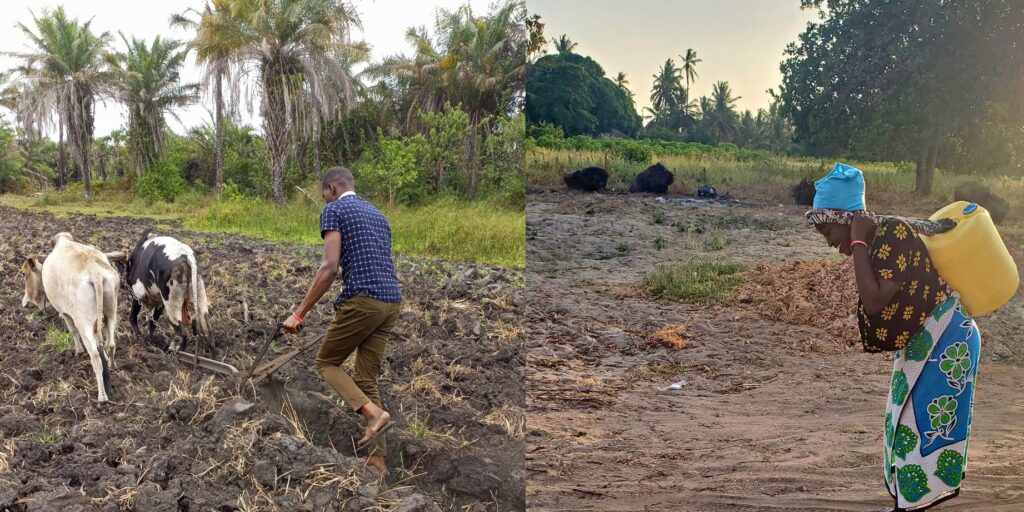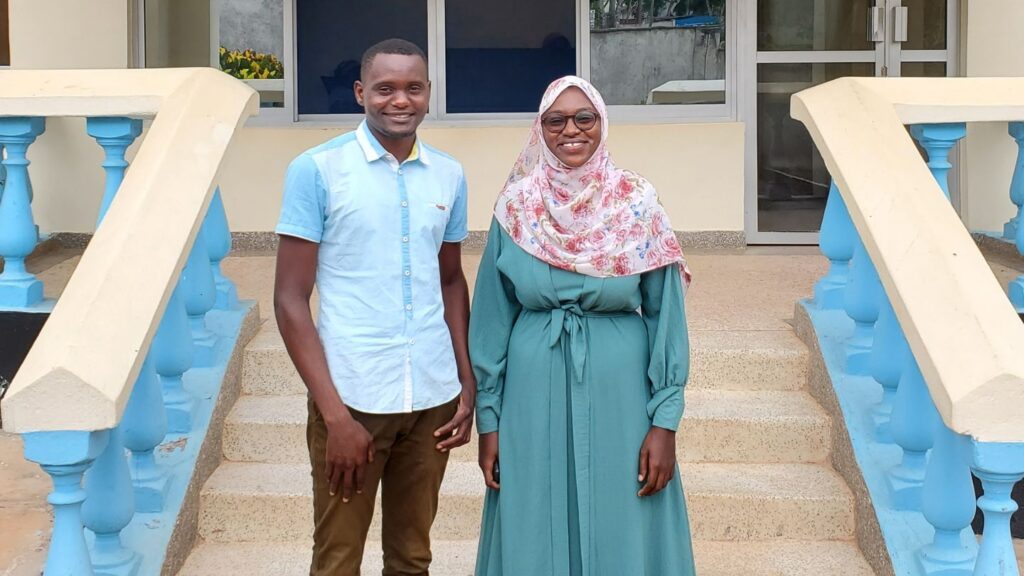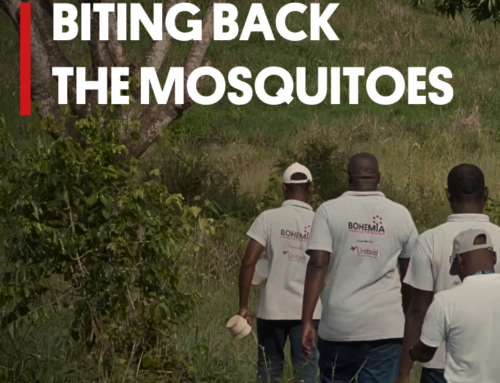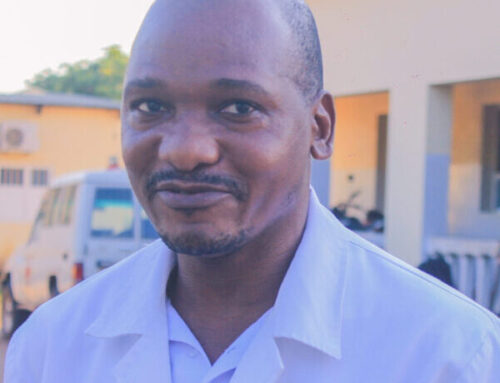Khadija Nuru and Kahindi Kazungu, Assistant Research Officers of the BOHEMIA project share their experiences of conducting ethnographic research to inform the malaria trial
Written by Murchana Roychoudhury, Communications Officer, the BOHEMIA project

BOHEMIA researchers Khadija Nuru and Karisa Kahindi Kazungu participating in community activities as part of the ethnographic research
On a Monday morning in October 2022, Khadija Nuru and Karisa Kahindi Kazungu arrived at the office of KEMRI-Wellcome Trust, for the first day of their new job. Little did they know that the ‘Assistant Research Officer’ roles would entail a hands-on ethnographic component, far away from the office, living in the villages of the trial site of the BOHEMIA project. Caroline Jones, the lead of the social science work package of the project believes that the inclusion of the opinions of the local populations is central to the success of clinical trials, especially those involving mass drug administrations (MDA). “We aim to ensure that their voices are heard as we plan the MDA implementation, and that their experiences and views of the intervention are understood and incorporated into the evaluation of the effectiveness of the MDA,” Jones explains. To realise these objectives, Nuru and Kazungu, packed their bags and set off to live in the many villages of the Msambweni and Lungalunga sub-counties of Kwale.
For Kazungu, a public health researcher, currently enrolled as a master’s student in epidemiology and biostatistics, vector control is a familiar topic. He has already worked on health projects on topics such as tungiasis and cattle-targeted integrated vector monitoring and was fairly confident about the participatory observation activities he was going to undertake. But, his biggest challenge was to find a room with a toilet. “In the study area, toilets usually collapse during the rainy season since the soil used to construct them gets washed away,” he recalls.
Nuru, a native of Kwale, holds a bachelor’s degree in sociology and religious studies and had previously worked on various health research, as well as youth empowerment programs for survivors of gender-based violence in Mombasa. Despite being from the same region as the participating community, Nuru had to learn the local language ‘digo’, that shares a lot of similarities with Kiswahili. She points out an interesting historical fact about another tribe in the region, the Makonde, “Also known as the Wamakonde, originally from Mozambique, their forefathers were brought to Kenya to work as labourers in the sisal plantations, during the colonial period.” This is a co-incidence as the BOHEMIA project just concluded its first MDA in Mozambique.

Breaking bread, building trust
“People are accepting of my presence. They are willing to talk and involve me in various activities in the village,” shares Kazungu. Nuru has had a similar experience, “Though this is the first time that the community is participating in ethnographic research, they are not insecure and have been warm and welcoming.”
In turn, the researchers do their best to integrate into the daily lives of their neighbours. Every day, Nuru and her female friends set out to collect water from wells in jerry cans. Kazungu milks the cows of his host family, harvests watermelons, and ploughs the fields with two bulls. Participating in these daily activities provides an opportunity to have a more intimate understanding of the lives of the community. For instance, the researchers realised that men are the primary decision-makers in the households. Sometimes they would prevent their wives from participating in the focussed group discussions. These observations are important and will be taken into consideration while designing the strategy for the MDA implementation. The researchers have also successfully identified opportunities and platforms that bring together all the villagers. By attending social events like funerals, weddings, ‘chamas’ (women’s microfinance groups), football matches, ‘kumtoa mtoto nje’ (baby reveal), and the ‘coming of age’ ceremony for boys of the Makonde tribe, the researchers have been able to break bread and build trust with the community.
More than just medicines
Social science research can capture essential insights that would otherwise be missed if MDAs were to be designed solely on clinical research and logistical considerations. What are the best times to visit households based on occupation patterns? How can all the villagers be mobilised to be present at the same time, same place? How to stop the spread of misinformation? None of these questions can be answered without the crucial groundwork that the social science team is doing, as part of this malaria trial.
Kazungu’s ethnographic research also revealed that a quarter of the villagers in one of his villages were living on land that belongs to a sugar company and the villagers were initially skeptical that the project was an attempt by the company to distribute poisonous drugs to ward away the people from their land. He was relieved to have learned about this situation and was able to clarify the project’s intentions and ensure that such misbeliefs did not become misinformation.
Many believe that malaria is a type of flu that can be treated without medicines and hospitals. Meanwhile, Nuru discovered her own set of unique insights in her village. She was told that the villagers receive plenty of drugs, sometimes more drugs than food assistance. But this was the first time that a sensitisation campaign was taking place. “People do their own research before taking the drugs. They wait to see how people will react to drugs given in an MDA, before taking the drugs themselves,” she explains.
The researchers have now returned back to their office and are now working on incorporating the insights from their lived experiences into an MDA design, adapted to enhance uptake and overcome cultural barriers.






